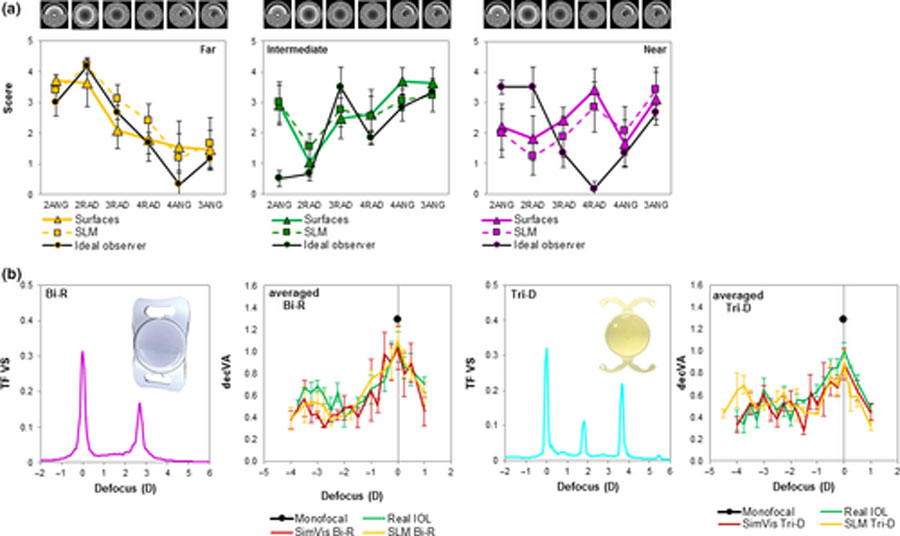Citation
Marcos S, Benedí‐García C, Aissati S, Gonzalez‐Ramos AM, Lago CM, Radhkrishnan A, Romero M, Vedhakrishnan S, Sawides L & Vinas M. VioBio lab adaptive optics: technology and applications by women vision scientists. Ophthalmic Physiol Opt 2020; 40: 75-87. For more information, click here.
Abstract
Purpose
Adaptive Optics allows measurement and manipulation of the optical aberrations of the eye. We review two Adaptive Optics set-ups implemented at the Visual Optics and Biophotonics Laboratory, and present examples of their use in better understanding of the role of optical aberrations on visual perception, in normal and treated eyes.
Recent findings
Two systems (AOI and AOII) are described that measure ocular aberrations with a Hartmann-Shack wavefront sensor, which operates in closed-loop with an electromagnetic deformable mirror, and visual stimuli are projected in a visual display for psychophysical measurements. AOI operates in infrared radiation (IR) light. AOII is provided with a supercontiniuum laser source (IR and visible wavelengths), additional elements for simulation (spatial light modulator, temporal multiplexing with optotunable lenses, phase plates, cuvette for intraocular lenses-IOLs), and a double-pass retinal camera. We review several studies undertaken with these AO systems, including the evaluation of the visual benefits of AO correction, vision with simulated multifocal IOLs (MIOLs), optical aberrations in pseudophakic eyes, chromatic aberrations and their visual impact, and neural adaptation to ocular aberrations.
Summary
Monochromatic and chromatic aberrations have been measured in normal and treated eyes. AO systems have allowed understanding the visual benefit of correcting aberrations in normal eyes and the adaptation of the visual system to the eye’s native aberrations. Ocular corrections such as intraocular and contact lenses modify the wave aberrations. AO systems allow simulating vision with these corrections before they are implanted/fitted in the eye, or even before they are manufactured, revealing great potential for industry and the clinical practice. This review paper is part of a special issue of Ophthalmic & Physiological Optics on women in visual optics, and is co-authored by all women scientists of the research team.

